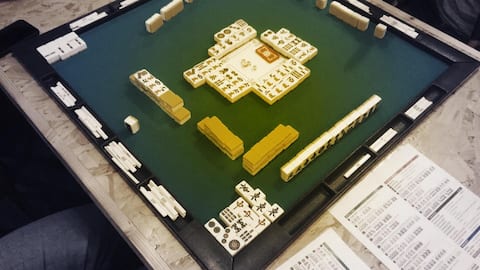Mahjong: A journey through evolution and gameplay
What's the story
Mahjong, an ancient Chinese tile-based game, has transcended centuries with its blend of strategy, skill, and cultural significance. From its humble beginnings in China to its global popularity today, mahjong has undergone an evolution that reflects its adaptability. Let's explore the fascinating journey of mahjong's evolution, from its origins to its modern-day variations, and discover the fundamentals of how to play this captivating game.
Beginnings
Qing dynasty
Originating during the Qing Dynasty in 19th-century China, mahjong evolved from traditional card games into a favored pastime among the elite. Its popularity surged beyond aristocratic circles, becoming a cherished activity for people of all backgrounds. With globalization, mahjong traveled across borders, adapting to various gaming traditions worldwide,demonstrating its ever-lasting charm and ability to adjust.
Explainer
What is the game?
Similar to poker but emphasizing strategy over luck, mahjong involves players striving to form winning hands using tiles drawn or claimed from others' discards. Initially daunting, familiarity with the tiles and hand combinations simplifies gameplay. Each player endeavors to assemble the appropriate tiles to construct their hand, ultimately blending skill and calculated decision-making in this intricate yet rewarding game.
Why is it famous?
Rise in pop culture
Mahjong has been increasingly featured in popular culture, appearing in movies like Crazy Rich Asians and TV series like Fresh Off the Boat (2015-2020), The Queen's Gambit (2020) showcasing renewed interest in strategic board games, sparking interest among new audiences. Additionally, the rise of online gaming platforms has made mahjong more accessible, allowing people to play conveniently from their device.
How to play
Understanding the basics
At its core, mahjong is a tile-based game typically played by four players. The game begins with a set of tiles shuffled and arranged face down on the table. Players then draw tiles to build combinations, aiming to complete specific winning hands. Throughout the game, players engage in strategic decision-making, carefully considering which tiles to keep, discard, or claim from others.
Tile set up
Setting up
Before the game begins, it's crucial to set up the mahjong board. Each player receives 13 tiles drawn from the tile pool, which is divided into three main categories: suits, honor tiles, and bonus tiles. The suits comprise "bamboo, circles, and characters", each containing numbered tiles from one to nine. Honor tiles consist of winds (east, south, west, north) and dragons (red, green, white).
Objective
Melds and sets
Additionally, there are bonus tiles like "flowers and seasons," which, while not part of the standard tile set, offer extra points or benefits during gameplay. The primary objective of mahjong is to create winning combinations, known as "melds" or "sets," using the tiles drawn and discarded throughout the game. A winning hand typically consists of four sets and a pair, although variations exist.
Further
Drawing tiles
Players take turns drawing tiles from the wall or claiming discarded tiles from other players. Each turn involves drawing a tile, considering strategic options, and discarding a tile to maintain a hand of 13 tiles. The game progresses as players strategize to complete winning combinations while thwarting opponents' efforts. Victory in mahjong hinges on achieving a winning hand before other players.
Victory
Winning hand
Victory entails arranging tiles into specific combinations, such as sequences of consecutive numbers or sets of identical tiles. Players can declare "mahjong" upon completing a winning hand, signaling the end of the game round. Points are awarded based on the value of the winning hand, with additional points for bonus tiles, special combinations, and specific conditions met during gameplay.
